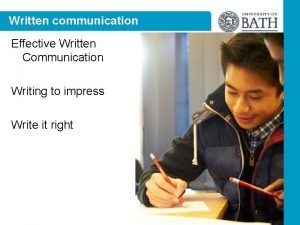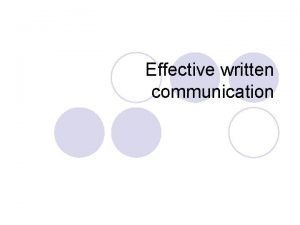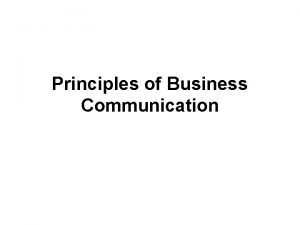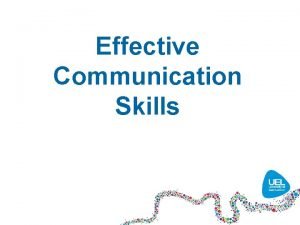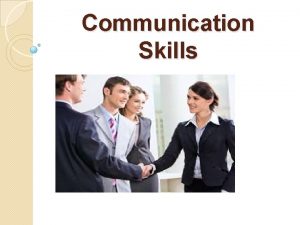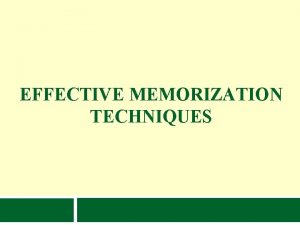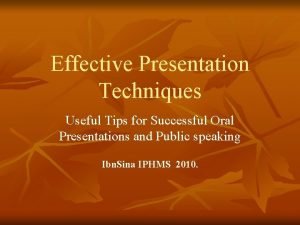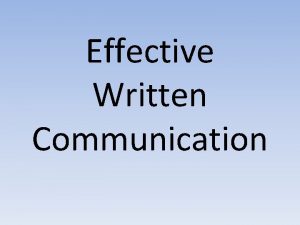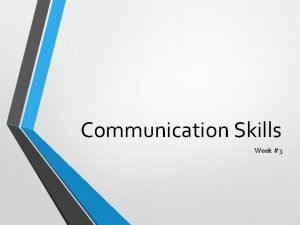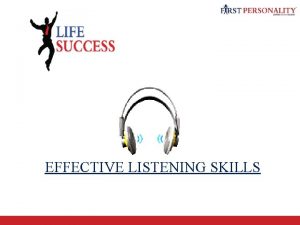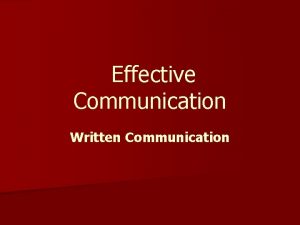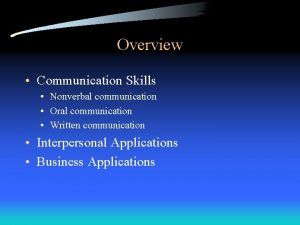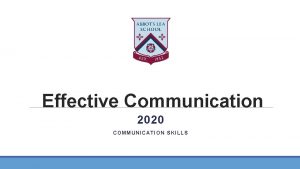Effective written communication General communication skills l Techniques









- Slides: 9

Effective written communication

General communication skills l Techniques for engaging audience interest– imagine listening to a speaker whose voice never varied in tone… when delivering your message, written or verbally, make sure you vary your tone. Verbally you can create interest by pausing. Face to face you may use multimedia, hold up objects, play music or film. Written can include pictures, diagrams, change of font REMEMBER – too much activity can detract from your message

Communicating in writing l Writing something can seem very easy, but effective written communication is another matter. When communicating in writing it is important to be aware of the following:

Communicating in writing l Key messages – for example the subject of an email or an inclusion of a heading immediately after the salutation in a letter. l Grammar and spelling – what ever the subject or type of communication it is important to have the correct grammar and spelling. Mistakes convey an unprofessional image to the reader and can also create confusion if they do not understand what you have written. l Structure – ensure the content is logical and well presented.

Writing alternative viewpoints l Conveying alternative viewpoints – it is important to show where one view starts and ends. You may include an introduction to explain the purpose and a summary to go over the main points covered. l Alternative viewpoints is mostly used when a piece of writing is comparing something.

Writing alternative viewpoints Both sides of the comparison must be shown if they are not people might trust any further writing. Alternative viewpoints are required to make your writing appear unbiased and impartial. E. g. if you were comparing two computer operating systems. Get the views for both operating system, and also get the views of the public rather than people who just work at the companies where the operating systems have come from.

Reviewing text l Relevant information – ensure important information is easy to find. Do not loose it within a mass of other details. Use, bold, underline or italics to ensure important facts are not missed l Reviewing and proofreading own written work – do this in addition to spell checker and grammar checks. Very important when reusing previous material.

Reviewing text Reviewing and editing documents created by others – e. g. other team members or quotations from outside suppliers. When editing the track changes tool can be used. Several methods can be used to review and edit documents that have been created by others. These review and edit techniques can range from general proof reading to checking for correctness and relevance. Other techniques may include highlighting text, using comments boxes, inserting footnotes and 'strike through' to delete text.

Communicating in writing l Note taking – involves summarising a communication and may involve: - Handwriting key points on a new sheet of paper. - Adding to the main message, i. e. writing in the margin, underlining or using a highlighter pen for important facts. - Inserting comments into electronic documents.
 Objective of written communication
Objective of written communication Effective written communication
Effective written communication What are the principles of business communication
What are the principles of business communication Written communication skills
Written communication skills Written communication skills
Written communication skills The art of communication quotes
The art of communication quotes What is oral communication and written communication
What is oral communication and written communication Oral communication conclusion
Oral communication conclusion Effective memorization techniques
Effective memorization techniques Effective oral presentation techniques
Effective oral presentation techniques
